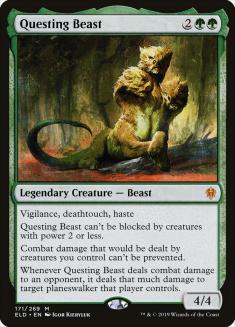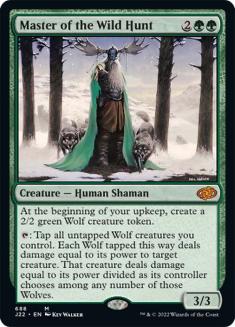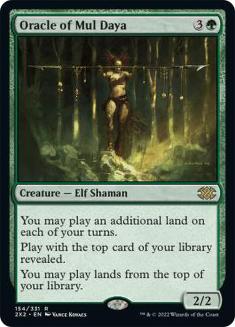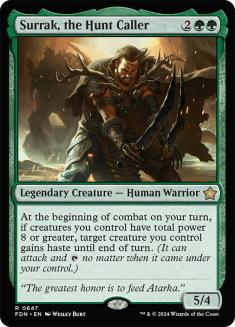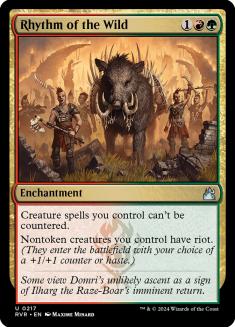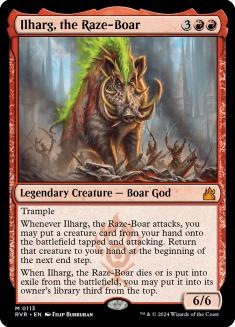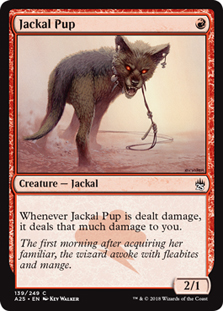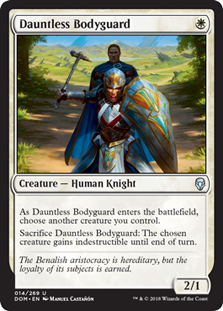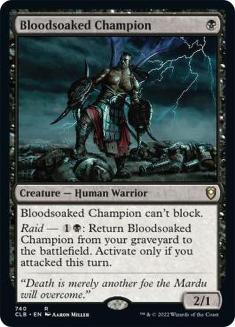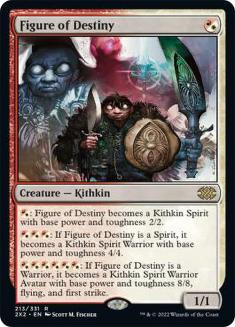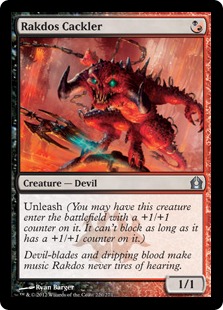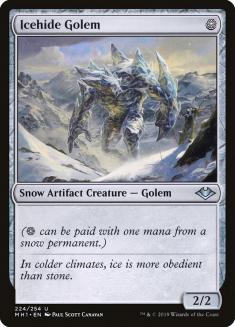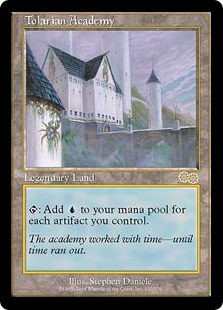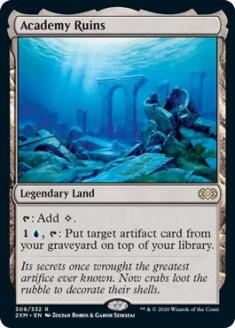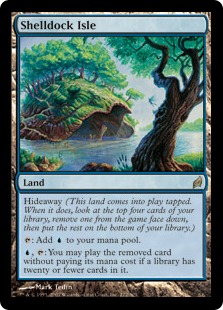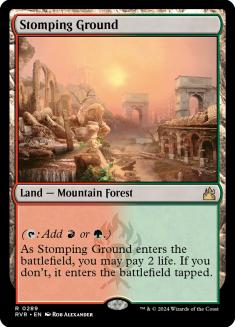The goal of Cube is to design a custom Draft environment. In order to properly support both micro-archetypes (e.g. Izzet Spells, Aristocrats) and macro-archetypes (e.g. Aggro, Midrange, Control), there are certain types of cards that must be included.
Every card in a Cube takes up a precious slot. Liliana, Dreadhorde General is a great Magic card, but I’m not in the market for another top-end threat in black. And even if I was, it’s important for the high-end in black to support Reanimator, hence spending a slot on Liliana, Dreadhorde General is not something I am interested in.
Understanding the ecosystem of a Cube, whether for design or play, as a function of “slots” provides perspective. It helps the designer to cultivate an environment where the player can express themselves in a variety of ways, and it helps the player understand the granularity of archetypal support. And some slots are more valuable than others.
One of the weakest slots in most Cubes is green four-mana creatures. Every other color has a large set of potent threats at this converted mana cost, but not green. Oracle of Mul Daya is in many Cubes, but if you compare that card to what other colors have access to, it’s almost laughable. Don’t get me wrong, these cards are fine for Cube, but it’s easy to cut one when a new card is printed like Questing Beast. This isn’t the case for other colors. Any four-mana threat outside of green has to clear a very high bar.
But what does this mean as a designer? It means that this slot is perfect for seeding an archetype. If there is a green four-mana creature that can help an archetypal identity in the Cube environment, the cost of including it is low because the slot is not premium. This is why I have Surrak, the Hunt Caller in my Cube. It helps enable a deck that has hasty big beaters, and plays out like Fires of Yavimaya decks of old. And I use very little slot-equity to provide this archetype. I include Lightning Mauler over a slightly better red-two-drop. Lightning Greaves was already in my Cube. Rhythm of the Wild takes up a precious Gruul slot, but it also supports persist-combo, so it does double duty for unique archetypes. This even adds texture by justifying Ilharg, the Raze-Boar, which is a solid midrange creature that is optimized in this specific archetype and plays well in decks looking to cheat out big creatures.
In my opinion, designing a Cube with this philosophy maximizes archetypal potential with very little cost. It means that a playgroup has access to more ways to express themselves through the game, and gives the draft more avenues to explore. This does come at a cost of not playing “the best cards,” and hence does marginally lower the power of the environment. I believe it is worth the upside of more archetypes. However, introducing archetypes through weak slots isn’t the only slot-concept that requires meticulous management.
The worst Limited formats are those that devolve into solved optimization problems. This happens due to a lack of balance between assertive archetypes and controlling archetypes. If every deck is aggressive, counterspells become terrible since the probability of falling behind is too high. If every deck is controlling, the necessity for a good curve and removal is so low that it warps the environment.
Now, thinking about Cube, observe that most Cubes are a collection of the best cards in Magic. There are inherently more “best” cards that fit in the camp of card-advantage and powerful non-aggressive role-player. This means that it’s extremely important to put a lot of effort supporting aggro, as the support doesn’t come along with the thesis of Cube.
In Cube, mono-red is often referred to as “the fun police.” While that has a clearly negative connotation, it’s important that a “fun police” exists. It means that the controlling decks need to respect aggressive decks. And it’s crucial to support enough assertive strategies that decks must be built to handle both aggression and late-game. This means that, in my opinion, every Cube should have a lot of dedicated aggro support. I think that having under eight one-drops per aggro-supporting-color at size 540 is not advisable, and getting that number closer to ten is better. Cards like Figure of Destiny, Rakdos Cackler, and Icehide Golem are instrumental to getting the proper density of aggressive creatures.
Hence, in order to provide aggressive support, it takes a lot of slots. It’s not only the one-drops, but a whole focus on an ecosystem where aggressive decks always exist when the natural tendency of both players and powerful cards lean away from it. This actually enhances my previous point of using weaker slots to seed archetypes. Getting the proper balance of macro-archetypes requires so many slots that there is rarely room for a large density of cards that support a specific archetype. The best way to fit in archetypes is to seed them as I’ve advised, alongside slightly worse versions of other cards that are still serviceable (e.g. Lightning Mauler as a red two-drop).
The last slot-type to consider when building a Cube are the land slots. Academy Ruins is a very cool card that works quite well with Mindslaver alongside a lot of mana, but blue is the hardest color to crack into because it has the least number of available slots. And both Tolarian Academy and Shelldock Isle are much better lands to include anyway.
The number of serviceable lands to include in a Cube is naturally much higher than the slots available. The Castle cycle from Throne of Eldraine is the most recent example of this. All of the Castles are good enough to make Cube decks, butincluding them requires removing another card, and what they provide isn’t potent enough to justify. Castle Embereth is a serviceable inclusion if the designer requires a slot-per-color for a non-basic land, but outside of that I don’t believe it’s worth cutting another red card.
Outside of colored lands, it’s important to have enough mana fixing for players to reliably cast their spells. This means that lands often take up a very large percentage of any Cube. And, just like any other slot, a designer can make decisions regarding the lands to impact the overall environment. Consider a playgroup that just doesn’t like aggro decks that much. If people aren’t going to draft aggressive decks often, it feels like a waste to include so many one-drops given my prior advice. But it’s still important not to let decks completely ignore the potential for assertive opponents. In this case, I believe a good solution is to make manabases painful. Include a second copy of shocklands (with different arts, of course) instead of dual lands. Play lands like Horizon Canopy and Adarkar Wastes. If there are Signets, change them to Talismans.
If the ecosystem changes such that starting life-totals are lower, an assertive axis becomes more potent even without a density of cards dedicated to only aggressive strategies. Midrange and control strategies can even adapt to capitalize on their own aggressive starts because the probability that this is an avenue to victory is reasonable. Glory-Bound Initiate is a great example of a card that non-aggressive decks would play in this environment, both to assist one’s own painful manabase and punish opponents’. In this world, even though classic hyper-aggressive decks aren’t common, aggressive starts still need to be respected, which cultivates a better Draft experience.
Overall, it is up to the designer of any Cube to decide the best way to create the ideal experience for their group. I strongly believe that it’s important to allow every kind of expression possible, and hence I maximize for the number of micro-archetypes available while maintaining a balanced set of macro-archetypes.
Consider how each card takes up space in your Cube. Is there a card that isn’t much worse, but more modal? A card that, by itself, seeds a whole new dynamic to some color-combination? The more you think about Cube in this manner, the easier it becomes to create an experience that never gets stale!

